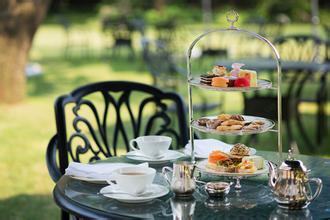Description of Flavor of Coffee beans in Limon Manor of Nicaragua
Description of Flavor of Coffee beans in Limon Manor of Nicaragua
The lake is full of waterbirds, and the lake is rich in all kinds of saltwater fish, such as crocodiles, sharks, sea turtles and so on. Sharks swim along the San Juan River in the Caribbean, so swimming is prohibited in Lake Nicaragua.
Coffee is Nicaragua's main export. According to the president of the Nicaraguan Coffee Farmers' Federation, due to the poor harvest of coffee in Nicaragua's Pacific region, the country's total coffee production in 1998 may be 12% lower than that in 1997. In the 1997-1998 coffee year, Nicaragua harvested a total of 1.422 million bags (46kg per bag) of coffee, the best harvest in 14 years after coffee production hovered around 1 million bags. It is estimated that the income from coffee exports in 1998 will be about 1.6 billion US dollars, and Nicaraguan coffee production will drop sharply. Wei Kailei coffee is Nicaragua's main export product. According to the president of the Nicaraguan Coffee Farmers' Federation, due to the poor harvest of coffee in Nicaragua's Pacific region, the country's total coffee production in 1998 may be 12% lower than that in 1997 and 1998.
Nicaraguan coffee of high quality is in the forefront of coffee beans in the world and enjoys a good reputation. Its particles are moderate in size, mild in taste and very aromatic and mellow.
Nicaragua is located in central Central America, bordered by the Pacific Ocean to the west and the Caribbean Sea to the east. The highlands in the north and the coastal plains in the east are part of the Central American volcanic belt. The eastern plain is high-temperature and rainy, with a tropical maritime climate. The suitable climate provides an excellent growth environment for the cultivation of coffee.
High-quality Nicaraguan coffee, grown in the north and middle of the country. Coffee is a pillar industry in Nicaragua, producing nearly 100,000 tons of coffee beans every year. Many people who have tasted Nicaraguan coffee usually think that it is no different from Salvadoran coffee or Honduran coffee. It has a rich aroma, smooth and delicate, and a slightly bitter finish, like a faint taste in wine.
Watching large and small groups of turtles climb up the reef to bask in the sun is a view by the lake. The shore of Lake Nicaragua is shady with trees, dotted with many red-roofed pavilions, the lake is blue, the lake wind is familiar, waterbirds fly, fish jump out of the water from time to time, and the blue sky, white clouds, water light and lake color constitute a charming scenery. At the beginning of the 21st century, Lake Nicaragua has been on a par with the Masaya volcano and has become two famous landscapes in Nicaragua.
The Great Wall of Nicaragua
The Great Wall of Nicaragua is located 150 kilometers west of Managua, the capital of Nicaragua. It was originally a boundary stone for Indian inter-tribal land, but also has a certain defense function. Lake Nicaragua, with a total length of 40 kilometers, is the largest lake in Central America. It is located in the southwest of Nicaragua. The local Indians call it Lake Corsi Walka, which means "freshwater sea". Lake Nicaragua is 160km long, with an average width of 60km and an area of 8264 square kilometers. Tens of thousands of years ago, Lake Nicaragua was an bay of the Pacific Ocean, cut off from the sea by volcanic eruptions. With the passing of the sun and the moon, the lake gradually diluted and became a freshwater lake. The marine fish that live in the lake also adapt to the desalination of the water and survive. At the beginning of the 21st century, there are still thousands of sharks, swordfish, silver carp and other marine fish in the lake. It is said that Lake Nicaragua is the only freshwater lake in the world that breeds marine fish.

Important Notice :
前街咖啡 FrontStreet Coffee has moved to new addredd:
FrontStreet Coffee Address: 315,Donghua East Road,GuangZhou
Tel:020 38364473
- Prev

Colombian Hope Manor Coffee Bean Grinding scale varieties deal with the taste of French-produced areas
Colombia hopes that the grinding scale varieties of manor coffee beans deal with the taste of the French region. Colombia's suitable climate provides a real natural pasture for coffee. Coffee trees in Colombia are mainly cultivated in the Andes, on steep slopes about 1300 meters above sea level, where the annual temperature is about 18 degrees Celsius, annual rainfall is 2000 to 3000 millimeters, and latitude 1-1.
- Next

Description of the characteristics and Flavor of Sidamo Coffee beans the regional grinding scale produced by taste treatment
Description of the characteristics and flavor of Sidamo coffee beans the coffee beans brought back by Wei Wei, the dessert maker Wei Wei, came from the famous the cupping room. The store was founded in 2011, when it won the second place in the Hong Kong barista competition, winning the top three in Hong Kong in 2012 and the Hong Kong champion and third runner-up in 2013, and founder Kapo Chiu in 2014
Related
- Detailed explanation of Jadeite planting Land in Panamanian Jadeite Manor introduction to the grading system of Jadeite competitive bidding, Red bid, Green bid and Rose Summer
- Story of Coffee planting in Brenka region of Costa Rica Stonehenge Manor anaerobic heavy honey treatment of flavor mouth
- What's on the barrel of Blue Mountain Coffee beans?
- Can American coffee also pull flowers? How to use hot American style to pull out a good-looking pattern?
- Can you make a cold extract with coffee beans? What is the right proportion for cold-extracted coffee formula?
- Indonesian PWN Gold Mandrine Coffee Origin Features Flavor How to Chong? Mandolin coffee is American.
- A brief introduction to the flavor characteristics of Brazilian yellow bourbon coffee beans
- What is the effect of different water quality on the flavor of cold-extracted coffee? What kind of water is best for brewing coffee?
- Why do you think of Rose Summer whenever you mention Panamanian coffee?
- Introduction to the characteristics of authentic blue mountain coffee bean producing areas? What is the CIB Coffee Authority in Jamaica?

